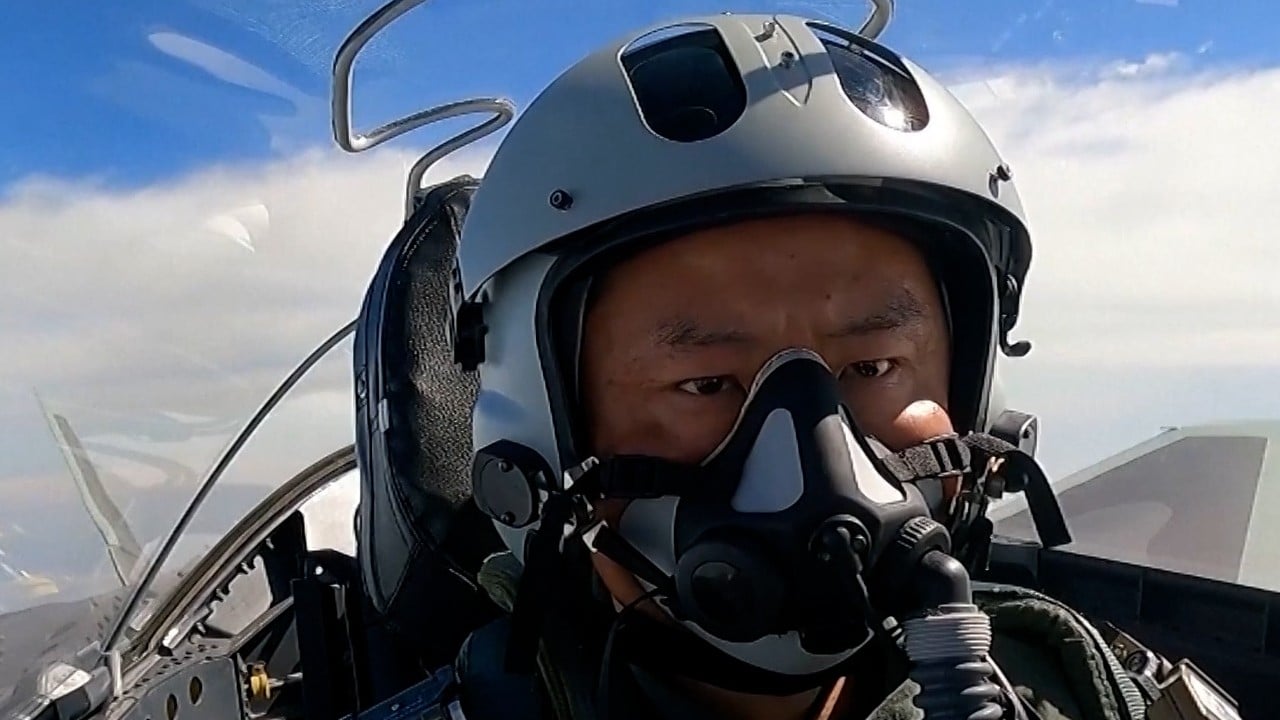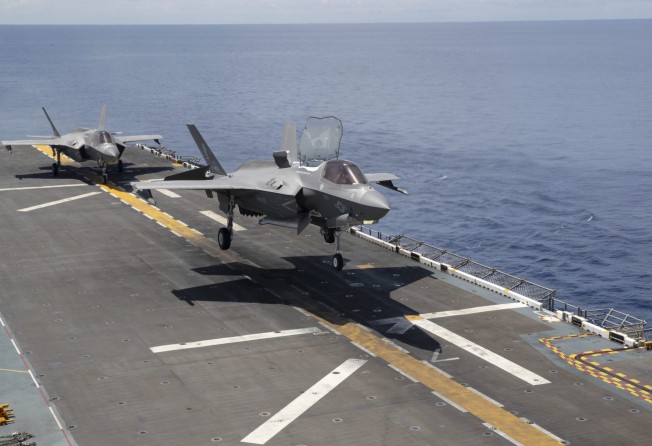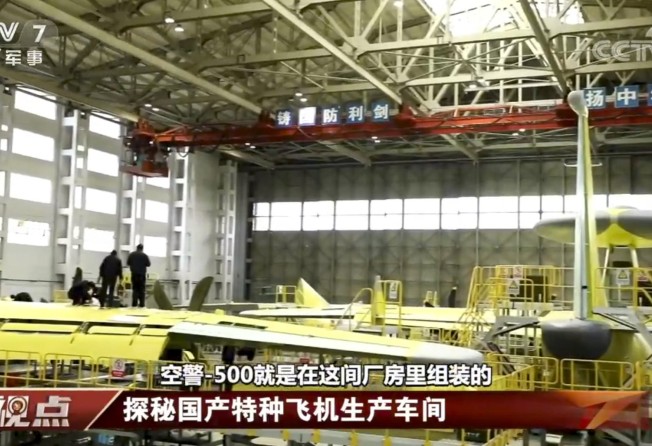
01:19
China’s PLA Air Force aims to improve pilot training on J-20 fighter jets

China is using world-class pulsating production lines to speed up deliveries of its advanced J-20 Mighty Dragon stealth jet fighters, military insiders and defence experts said.
A military insider said the increased production of J-20s was aimed at balancing the United States’ increasing deployment of its dominant air-superiority aircraft, the F-22, and another fifth-generation stealth jet fighter, the F-35, to the region.
The source said the application of the new pulsating production lines and domestic engines had pushed the number of J-20s to equal, or even exceed, the number of US F-22 Raptors. Pulsating production lines are also used by American aircraft giant Lockheed Martin, which produces the F-22 and F-35.
Earlier reports suggested China may have produced at least 200 J-20s, based on the serial and running numbers painted on aircraft displayed at this month’s air show in Zhuhai, Guangdong province.
Citing military aviation expert Andreas Rupprecht, US Defence News reported early this month that serial numbers painted on two of the four J-20s at the air show suggested its developer – Chengdu Aircraft Industry Group – had delivered at least 140 in its latest blocks, the third and fourth.
In January, the Post reported the People’s Liberation Army planned to deploy about 200 J-20s to meet intensive training demands designed to cope with the US’ increasing deployment of F-35s to the region.
The J-20 entered service in 2017 after the US deployed more than 100 F-35s to Japan and South Korea.
China has not announced how many J-20s have been put into service, but PLA Air Force spokesman Senior Colonel Chen Jinke announced in September that it was operating in all five of the country’s military theatre commands.
CAIG started mass production of the J-20 in 2020, after the Central Military Commission leadership decided to replace the aircraft’s original Russian Saturn AL-31 engines with domestically produced WS-10C Taihang engines equipped with thrust vector nozzles.
Chinese engineers have been developing a high-thrust engine, known as the WS-15, to allow the J-20 to close the performance gap with the F-22. But that project has fallen behind schedule and is now expected to begin production next year, prompting CAIG to use the WS-10C as a stopgap alternative.
The Mighty Dragon was seen as the PLA’s answer to the American F-22, which was developed to be a dominant air-superiority fighter and is still considered to be the best such jet in service in the world.

The US Air Force originally planned to buy 750 F-22s to form a robust fleet of stealth interceptors for the 21st century. But only 186 fighters were delivered when its production lines were completely shut down in 2012 because Washington found it was not worth using such expensive aircraft in counterterror and counter-insurgency operations.
Only around 130 of the 186 delivered F-22s were ever operational, and the number of combat-ready F-22s is now estimated to be fewer than 100. A dozen were flown from Alaska to US bases in Okinawa, Japan, this month for six-month rotations as ageing F-15s are retired.
It costs about US$110 million to build a J-20, according to a report posted on the PLA’s social media account in 2018, half the cost of an F-22 Raptor. But both require expensive maintenance and training.
Lockheed Martin developed the cost-saving single-engine F-35 as replacement for the F-22, making its unit price close to that of the heavyweight double-engine J-20.
The development of the F-35, which is also exported, inspired Chinese aircraft manufacturers to develop their own pulsating production lines, said Zhou Chenming, a researcher from the Yuan Wang military science and technology think tank in Beijing.
“Now both CAIG and other state-owned aircraft developers have all adopted the technology to produce their jet fighters,” Zhou said. “That’s why the PLA has been able to step up its warplane replacement progress in recent years.”

State broadcaster China Central Television released several videos in December 2019 that showed the PLA’s KJ-500 early-warning aircraft being assembled by Shaanxi Aircraft Corporation on pulsating production lines at Asia’s biggest aircraft plant in Hanzhong, Shaanxi province.
It was the first time China had revealed its use of pulsating production lines, seven years after Lockheed Martin disclosed video clips of their use at its F-35 factory.
A pulsating production line is a method of assembling an aircraft after it enters the final assembly process, where large structural parts and flight control systems such as the cockpit, engines, wings, tail, landing gear and weapons system need to be put together precisely. All the standardised electronic mate and alignment system stations are set up vertically with adjustable platforms, which means more work can be done in less time, according to Lockheed Martin.
The impact of the Covid-19 pandemic meant Lockheed Martin was able to deliver 142 F-35s last year, and it plans to produce 156 this year, according to its annual report. The company once claimed its innovative production system could produce up to 300 F-35s a year at full speed.
Fu Qianshao, a retired PLA Air Force equipment specialist, said pulsating production lines had been commonly used in both military and civilian aircraft production in China.
“China never announces the exact number of its warplanes, but I believe the combat capability of the J-20 is on par with the F-22, and even more advanced than the F-35, given it was designed and developed in the new century,” he said.
Stephen Burgess, a professor in the department of international security studies at the US Air War College, said it was too early to draw any conclusions on the potential air superiority of the J-20 because the PLA had yet to implement systematic joint operations between different fighting wings, unlike the US air force and navy.
“Air superiority of [the PLA] over China – possibly. Over the western Pacific – questionable,” he said. “There are several variables to take into account – pilots, network-centric warfare, aerial refuelling, the technological advantages of the F-22 and the US Navy’s F-35C, etc.”